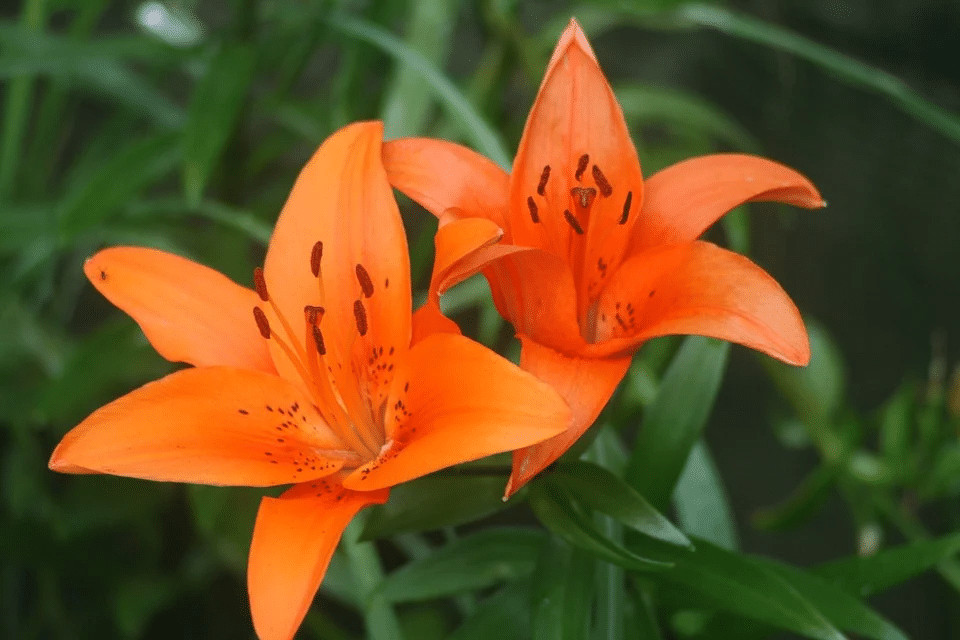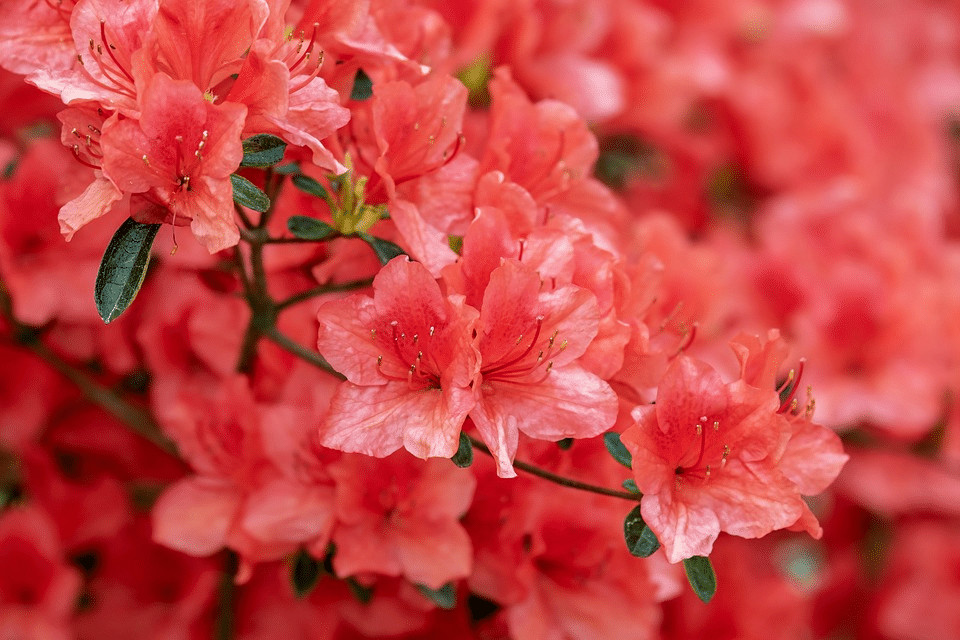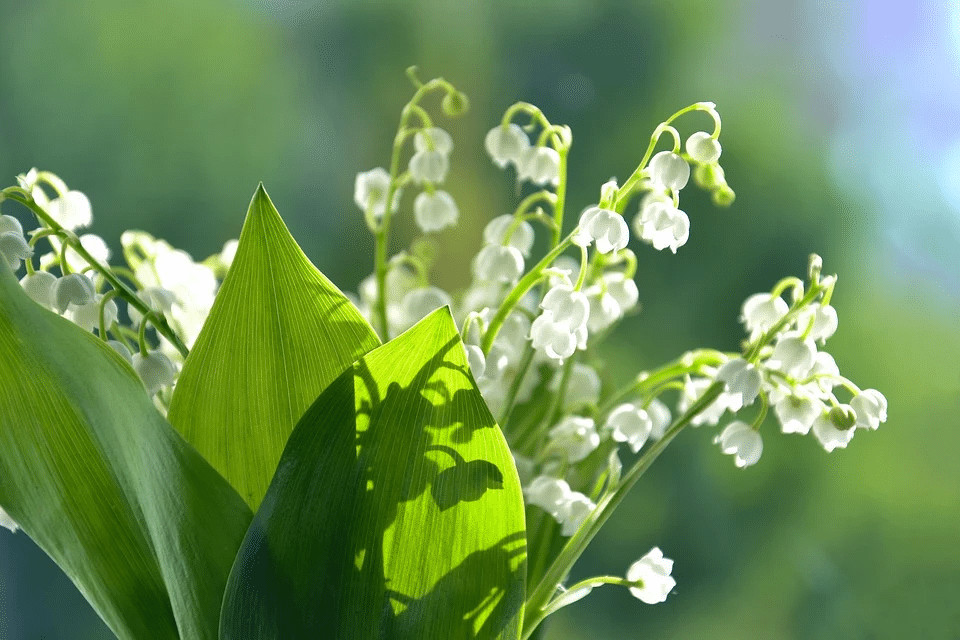Us Brits are a flora and fauna-loving nation, spending over £2 billion a year on plants and flowers. But did you know that some of these could be putting your furbaby at serious risk? Although most are safe and might just cause some irritation or sneezing, there are at least 150 plants poisonous to cats.
As a cat owner, your aim is to keep your pet as healthy and well as possible. This means ensuring they have a balanced diet, are exercising regularly and getting loads of mental stimulation. But it also means keeping them away from potentially poisonous plants in your garden, and your home.
Let’s jump right in and take a look at which are the most toxic plants for cats, how to identify if your cat has been poisoned and what you need to do if this happens. Make sure you carry on reading to the end to find out how you can keep your cat (and dog) safe.
Which Plants are Poisonous to Cats?
Although there are thousands of plant species in the UK, only 150 are poisonous to cats. We say only, but some of these are incredibly common, and there is a good chance you have them in your house or garden. Luckily, some of the deadliest plants have names that allude to how dangerous they are, but loads don’t.
It is crucial that you know which are the most poisonous plants for dogs and cats to keep your pets safe. Some species are only toxic when ingested, while others can cause harm if your cat simply rubs up against them, or gets the pollen on its fur.
11 Plants Poisonous to Cats
1. Lilies

Certain types of lilies are possibly the most dangerous plants for cats. These include tiger lilies, Easter lilies, stargazers and daylilies. All the parts of this common flower often found in people’s homes contain extremely toxic substances that can make your cat seriously ill, or even kill it.
And your cat doesn’t even have to eat the leaves or petals. Water in a vase containing the lilies could be fatal, as well as the pollen. If you suspect poisoning from this particular plant, urgent veterinary care is needed as soon as possible. If left untreated, lilies can cause severe long-term damage to the kidneys, and for some cats, like Liffey, even death.
2. Daffodils

Spring is synonymous with loads of daffodils in bloom in gardens and parks across the UK, but this seemingly innocuous plant has the potential to make your cat very sick, or even kill it. The flower itself contains a vomiting-inducing alkaloid, while the bulb can cause cardiac arrhythmias or respiratory depression. Both of these are serious conditions for cats, and could possibly even be life-threatening.
3. Tulips

Tulips are one of the most popular cut flowers, only second to roses in the UK, and understandably so. But for cat owners, having them in your home could prove fatal. Both the petals and bulb contain allergenic lactones, which can cause diarrhoea, vomiting and excessive drooling resulting in dehydration and other associated health problems. Ingesting large amounts of the bulb can increase cats’ heart rate.
4. Rhododendron/Azalea

It is hard to believe that this typical garden and houseplant is toxic to cats. But it is. Typically rhododendrons are grown outdoors, while azaleas are popular houseplants, and both contain poisons that can affect your cat’s cardiovascular, gastric and nervous systems. Symptoms include:
- Diarrhoea
- Weakened heart rate
- Loss of appetite
- Drooling
- Leg paralysis
Without treatment, a cat will die within a few days of ingesting these plants.
5. Amaryllis

Beautiful but deadly, amaryllis plants may cause serious illness, and possibly death, if ingested. Parts of the plant that are poisonous include the flowers and stalks, as well as the bulb. While the toxicity levels of the stem and plant are considered mild to moderate, the poison is most concentrated in the bulb.
Signs of amaryllis poisoning include gastro-intestinal problems such as vomiting, diarrhoea, loss of appetite, stomach pain, as well as seizures, tremors and changes in a cat’s blood pressure. Like the other plants already mentioned, urgent veterinary care is needed if you suspect your cat has accidentally ingested it.
6. Lily of the Valley

Although the lily of the valley isn’t a true lily, it is still extremely poisonous for both cats and dogs. Worst of all, it has a gorgeous fragrance and pleasant-tasting berries that attract pets (and other animals) to it. They are also highly toxic to humans, so beware. With as many as 40 types of cardiac glycosides identified, all parts of the plant are dangerous, and ingestion can lead to seizures, arrhythmia and a drop in blood pressure. Poisoning from the lily of the valley may also cause a coma and eventually death.
This plant is a popular choice for gardens because it is considered low maintenance, grows well as a ground cover, and has a perfume-like fragrance. However, it’s not worth the risk to your pets, or you.
7. Nerium Oleander

The Nerium oleander is a particularly hardy plant that is both drought and frost tolerant. While it is more commonly found in dry areas around the world, the plant is popping up more and more in the UK, especially in the south. Unfortunately, this plant isn’t only poisonous when it is growing in the garden. If used on a bonfire, for example, the smoke is also toxic.
8. Sago Palm

The innocuous-looking sago palm is actually a cycad and can be found in many homes across the country, but the plant is highly toxic to cats. If your cat chews on the leaves, it can result in liver damage and even death. Other cycads are also poisonous, especially the seeds.
9. Monkshood

Monkshood or wolfsbane is another one to watch out for. It is a popular garden plant across the UK but is as poisonous as it is pretty. Like a lot of the poison plants already mentioned, all parts of this plant are toxic, including the roots. Just coming into contact with the sap can cause skin irritation, burns and blisters.
10. Iris and Gladioli


Both the iris and gladioli are toxic to cats, and while it isn’t usually fatal, common symptoms can cause your pet a fair amount of discomfort. These include diarrhoea, irritation of the skin, vomiting, abdominal pain, nausea as well as mouth ulcers.
11. Morning Glory

Although morning glory flowers aren’t poisonous if eaten, the seeds are. They have a chemical that is similar to LSD and can cause a wide range of symptoms including disorientation, hallucinations, loss of appetite and diarrhoea.
Other poisonous plants found in the UK include buttercups, geraniums, marigolds, peonies, snapdragons and poppies. Remember also that plants are seasonal across the UK, so to keep your pets safe, you will need to be vigilant throughout the year.
Regardless of the severity of the poisoning, veterinary care is essential. But if you are unable to get to the vet immediately, you can call the Animal Poison Line (APL). This specialised telephone service is available around the clock, and they can advise on the best course of action.
How to Keep Your Cat Safe From Poisonous Plants
You can keep your cat safe from poisonous plants inside the home by removing them. But it isn’t as easy with outdoor plants and flowers, especially if your cat roams around the neighbourhood.
The first step is familiarising yourself with the most toxic plants in your area. Remove harmful ones from your garden, and list any you see in your neighbours’ yards. Keep records of both the Latin name and common name so you can identify them more easily. This will also help your vet to treat your cat correctly in the event of it being poisoned. You could also plant a cat-friendly garden. Not only will your cat be safe, but you will also have complete peace of mind.
We really hope you find this article helpful. And let us know in the comments below if we have left a particularly poisonous plant off the list that you think needs to be included.
And for more advice and fascinating feline facts please take a look at our cat library here.
















